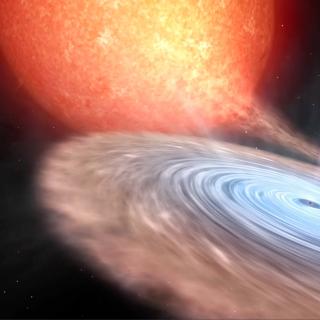Bibcode
Paice, J. A.; Gandhi, P.; Shahbaz, T.; Uttley, P.; Arzoumanian, Z.; Charles, P. A.; Dhillon, V. S.; Gendreau, K. C.; Littlefair, S. P.; Malzac, J.; Markoff, S.; Marsh, T. R.; Misra, R.; Russell, D. M.; Veledina, A.
Bibliographical reference
Monthly Notices of the Royal Astronomical Society
Advertised on:
11
2019
Citations
43
Refereed citations
36
Description
We report on simultaneous sub-second optical and X-ray timing observations of the low-mass X-ray binary black hole candidate MAXI J1820+070. The bright 2018 outburst rise allowed simultaneous photometry in five optical bands (ugrizs) with HiPERCAM/GTC (Optical) at frame rates over 100 Hz, together with NICER/ISS observations (X-rays). Intense (factor of 2) red flaring activity in the optical is seen over a broad range of time-scales down to ̃10 ms. Cross-correlating the bands reveals a prominent anticorrelation on time-scales of ̃seconds, and a narrow sub-second correlation at a lag of ≈ +165 ms (optical lagging X-rays). This lag increases with optical wavelength, and is approximately constant over Fourier frequencies of ̃0.3-10 Hz. These features are consistent with an origin in the inner accretion flow and jet base within ̃5000 Gravitational radii. An additional ̃+5 s lag feature may be ascribable to disc reprocessing. MAXI J1820+070 is the third black hole transient to display a clear ̃0.1 s optical lag, which may be common feature in such objects. The sub-second lag variation with wavelength is novel, and may allow constraints on internal shock jet stratification models.
Related projects

Black holes, neutron stars, white dwarfs and their local environment
Accreting black-holes and neutron stars in X-ray binaries provide an ideal laboratory for exploring the physics of compact objects, yielding not only confirmation of the existence of stellar mass black holes via dynamical mass measurements, but also the best opportunity for probing high-gravity environments and the physics of accretion; the most
Montserrat
Armas Padilla